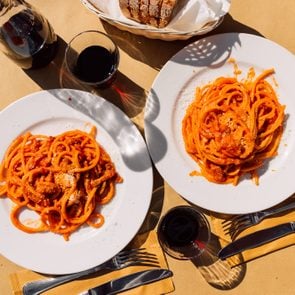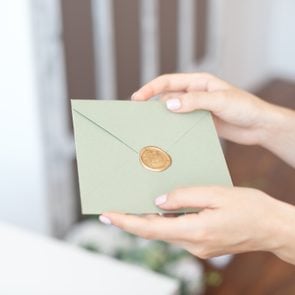How to Eat with Chopsticks Like an Absolute Pro
Updated: Mar. 12, 2024
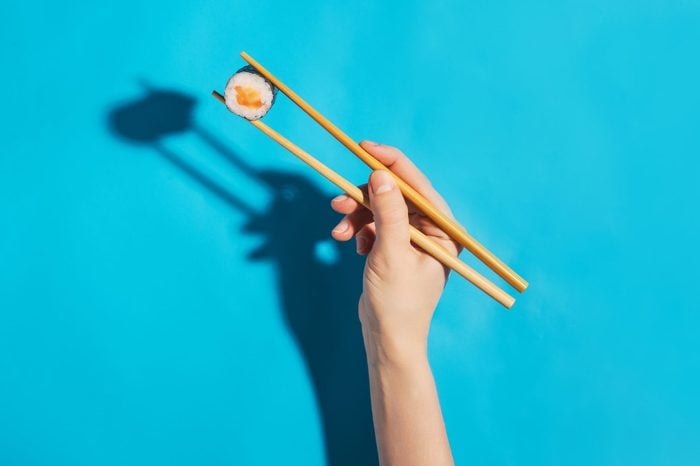
Become a chopsticks master in no time with these handy step-by-step instructions and etiquette tips for how to eat with chopsticks
I often joke that I was born holding chopsticks. This is obviously not true, but my Korean immigrant parents did teach me how to eat with chopsticks, as well as various chopsticks etiquette rules, when I was a toddler. While forks and knives have their uses, chopsticks offer a sort of versatility and precision I’ve grown to appreciate. They can act as an extension of the fingers when used to pick up even the smallest pieces of food using a pincer-like motion, to scoop food from underneath and to even separate food into smaller bite-size pieces.
As Asian cuisines gain global popularity, it’s exciting to see more non-Asians using chopsticks to eat their noodles and soup dumplings. (Though Westerners may be surprised to learn that Japanese people traditionally use their hands to eat sushi and only eat sashimi with chopsticks.) While it may seem impossible to learn as an adult, and no one will judge if you ask for a fork at an Asian restaurant, anyone can truly learn how to use chopsticks. With practice, you too can be like actor Oscar Isaac and eat Cheetos with chopsticks to keep your hands mess-free!
Ready to learn how to wield this utensil like you know what you’re doing? Read on to learn how to eat with chopsticks correctly—and politely!
Get Reader’s Digest’s Read Up newsletter for more food tips, humor, cleaning, travel, tech and fun facts all week long.
The humble history of chopsticks
It’s truly a marvel how chopsticks became such a global sensation when you consider their humble beginnings. Archaeologists trace chopsticks back to bone sticks in Neolithic China, although these sticks were most likely not used for eating.
“The first samples of chopsticks were found about 5,000 to 7,000 years ago in a Neolithic cultural site in Northern Jiangsu,” shares Q. Edward Wang, PhD, a professor of history and author of Chopsticks: A Cultural and Culinary History. “It was during the 4th to 3rd centuries B.C.E. that both archaeological and historical evidence point to the use of chopsticks as an eating tool.” This was during China’s Bronze Age, when cooking hot food in bronze cauldrons and eating that hot food simply made more sense with chopsticks than with fingers.
Known as kuàizi in Chinese, jeotgarak in Korean, hashi in Japanese and đũa in Vietnamese, chopsticks spread to the rest of what Wang calls the “chopsticks cultural sphere” from the 6th century onward, as the act of cutting into meat with a knife at the dining table eventually became perceived as un-Confucian and violent.
But not all Asian cultures use chopsticks. Many, like Thai and Indonesian people, actually use their hands or prefer forks. And different Asian cultures have different table manners when it comes to their use (more on that later).
How to eat with chopsticks
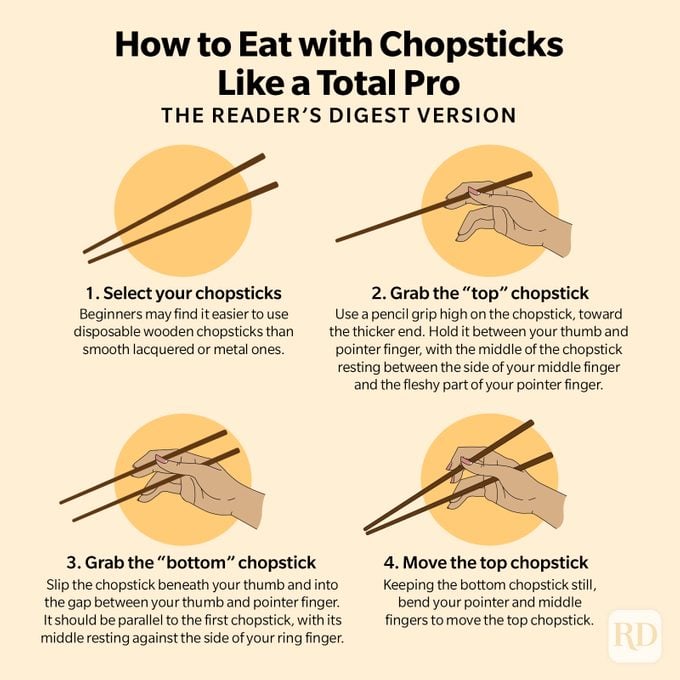
Learning how to eat with chopsticks may seem daunting at first, as they do require a certain level of dexterity, but this is something you can develop through practice. “My opinion is that if they are so difficult to maneuver, then chopsticks would not have become so common in Asia,” says Wang. “In other words, anyone could learn to use chopsticks if they are willing to try, even if accidents happen along the way.”
So, how do you use chopsticks? The four steps below will teach you the proper way to use the utensil.
1. Get the right chopsticks
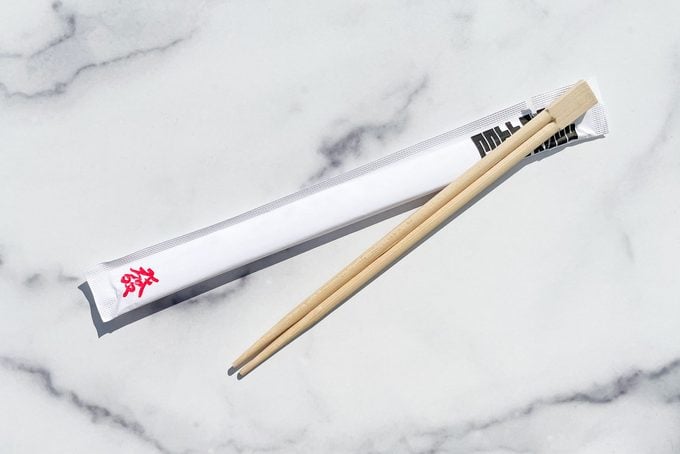
As you’re starting out on your chopsticks journey, I recommend using disposable wooden chopsticks that you can get at your local Chinese takeout restaurant. Not only are they readily available, but their rectangular shape and flat sides make it much easier to pick up food than smoother lacquered chopsticks (or metal chopsticks, if you’re in a Korean home or restaurant). You can work your way up to those!
2. Take the “top” chopstick into your dominant hand
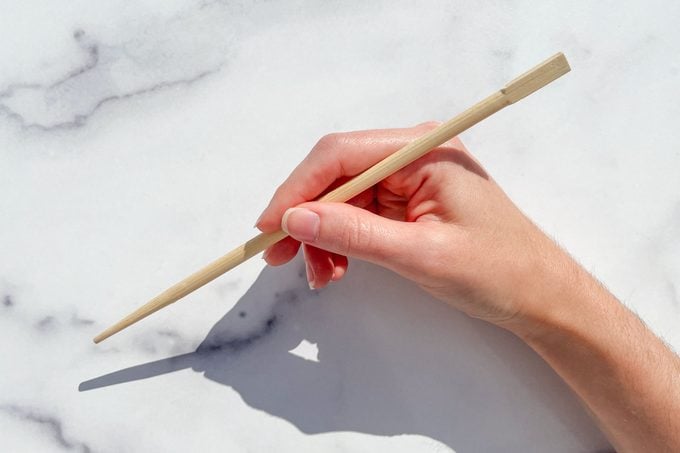
People (and even cultures) may vary when determining how to properly hold chopsticks. You may even wonder whether following the “right” process is worth the practice, but proper technique means you can have more control and therefore do more with them.
Start by taking one chopstick into your dominant hand and gripping it like you would a pencil—but hold it high on the chopstick, closer to the thicker end. Place it between your thumb and pointer finger, with the middle of the chopstick resting between the side of your middle finger and the fleshy part of your pointer finger.
3. Take the “bottom” chopstick into the same hand
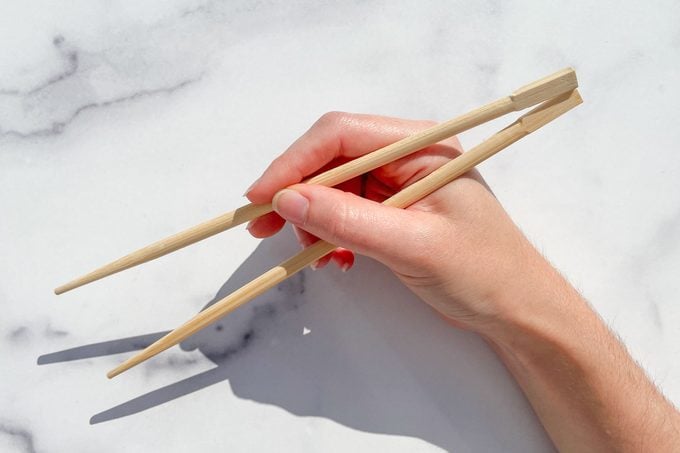
It’s time to add your second chopstick. Slip it underneath your thumb and into the gap between your thumb and pointer finger. It should be parallel to the first chopstick.
Resist the urge to rest the second chopstick against your middle finger. Instead, the middle of the bottom chopstick should rest against the side of your ring finger.
4. Move the top chopstick by bending your pointer and middle fingers
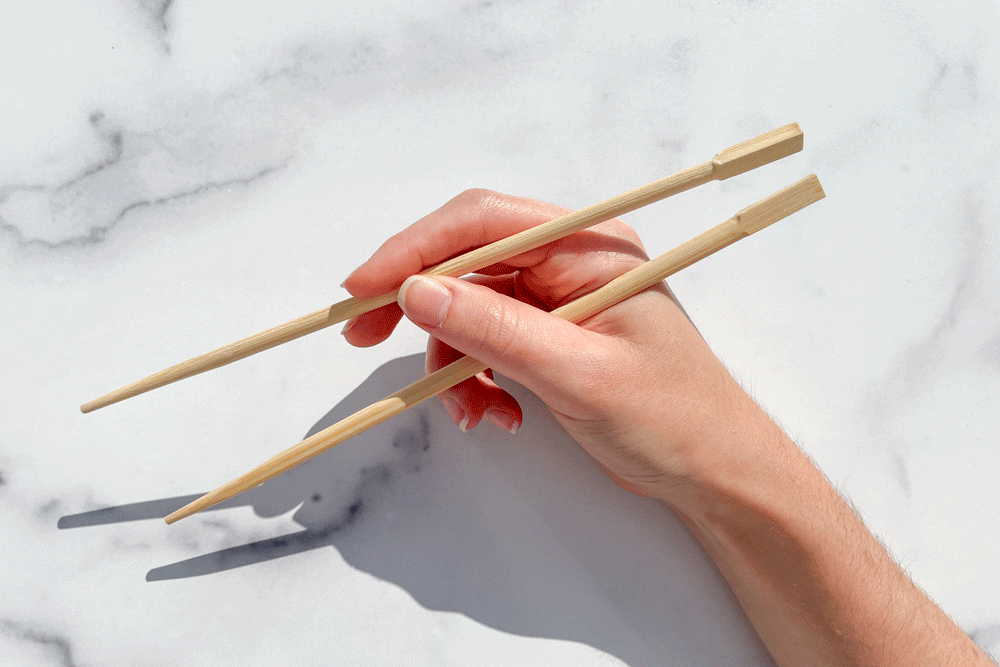
Getting used to the motions of using chopsticks can feel awkward when you’re just starting out. “The key is to hold the lower stick steady and move only the upper stick,” advises Wang. “It is also important to keep some space between the sticks on top so you can close the bottom of the chopsticks to clasp food when you move the upper one to touch the bottom one—they become a pair of pincers, so to speak.”
This pincer-like motion is great for picking up meat and veggies. Wondering how to eat rice with chopsticks? Admittedly, it can be tricky, especially long-grain rice, which is less sticky. The trick is to keep the chopsticks parallel to each other and use the ends of them to scoop the rice from underneath, then lift it into your mouth.
Still feeling stuck? These days, you can buy training chopsticks that hold the chopsticks together for you. It’s a good option if you get frustrated along the way or just need a confidence boost.
Etiquette tips for eating with chopsticks
Just like there is etiquette around Western eating habits (with a “right” way to eat mussels, lobster and other foods), there are some general faux pas and interesting food facts to consider when eating at an Asian restaurant or in an Asian home.
Don’t stand your chopsticks up in a bowl of food
Sticking chopsticks upright in a bowl of food is a part of some Asian death rituals in which you lay food out for an ancestor on the anniversary of their death. When you stick your chopsticks upright into food any other time, it’s considered unlucky, and you may even invite a random hungry spirit to your dinner table!
Don’t stab your food with a chopstick
Poking a chopstick through your food rather than picking it up is generally frowned upon (unless you’re tearing a larger piece of food). Remember, you can absolutely ask for a fork in an Asian restaurant if you’re still learning how to eat with chopsticks, especially if you’re dropping food or it’s taking away from your enjoyment of eating. Just keep in mind that the restaurant may not have a fork, especially if you’re traveling in one of the countries in the chopsticks cultural sphere.
Don’t eat from a shared plate with your chopsticks
For hygienic reasons, it’s a huge no-no to use your chopsticks to grab from the shared plate when partaking in communal eating (aka “family style”) at Chinese restaurants, especially if you’re not eating with your own family. Usually, there is a large serving spoon or separate chopsticks so you can put the food onto your own plate or rice bowl.
Don’t rub your wooden chopsticks together
One of the rules of eating Japanese food at a restaurant is to never rub chopsticks together after separating, as that implies the restaurant sourced cheap chopsticks, which can be one of the signs of a bad restaurant.
If you find splinters in your chopsticks, you can ask for another pair. Restaurant staffers may dislike certain polite habits, but this isn’t one of them.
Consider cultural differences
It’s also important to consider the fascinating differences in customs around chopsticks across different cultures. When setting a table in Korea, make sure to include chopsticks and a spoon. Whereas lifting the bowl closer to your mouth and scooping rice with chopsticks is the norm in China, Japan and Vietnam, it’s considered undignified to lift a rice bowl from the table in Korea, and Koreans tend to use spoons to eat rice.
This extends to soup bowls as well, by the way. So while lifting a bowl of miso soup is perfectly acceptable in Japan, lifting your bowl of kimchiguk in Korea is not!
Be sure to observe your hosts or the people around you, and when in doubt, don’t be afraid to ask. As long as you are respectful and willing to learn, people are always going to appreciate your efforts and be willing to help you become a chopsticks master.
About the expert
- Q. Edward Wang, PhD, is a professor of history and coordinator of Asian studies at Rowan University and a Changjiang professor of history at Peking University in China. He is the author of Chopsticks: A Cultural and Culinary History.
Source:
- Jimmy Kimmel Live: “Oscar Isaac on Becoming an Internet Sensation”

